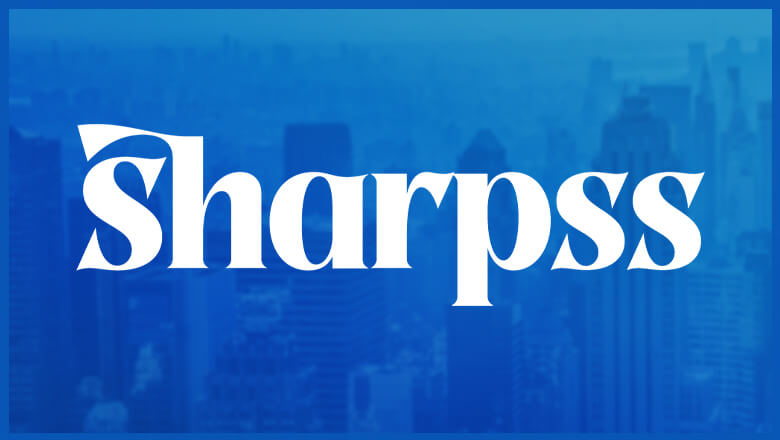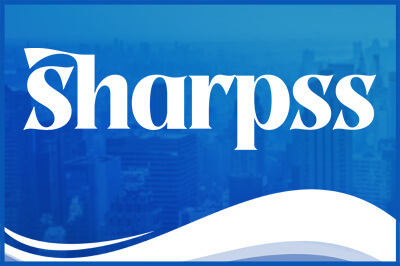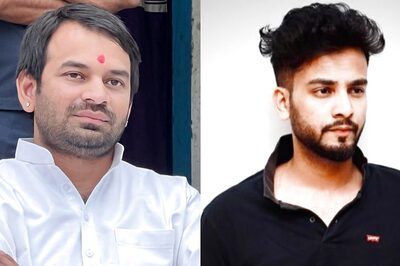
views
Formal Shirt Collars
Standing collar A standing collar is any type of collar that stands up around the neck. Because these collars are stiffer and taller, they’re suitable for formal events and traditional styles. When to wear: Wear a standing collar in formal and business settings. Styling tips: Pair a shirt with a standing collar with a blazer or suit for a professional or formal look.
Point collar The point collar is the default business collar for most white-collar companies. As the name suggests, the collar tips are pointed. These collars feature a small and neat spread that typically won’t expose any of the tie on either side beyond the knot. When wearing a jacket, the collar’s points will not be covered by the lapels. When to wear: Wear a point collar to the office or to formal events. Styling tips: Wear a point collar if you have a wider face to create balance. Point collars work best in medium stiffness and are best worn with collar stays to keep the collar looking straight.
Spread collar The spread collar is one of the most common and universally flattering types of collars. It’s characterized by wider collar points than a standard point collar and is suitable for a wide range of functions, including business meetings, weddings, cocktails, and everyday wear. When to wear: Wear a spread collar for almost any occasion, including formal, business, and casual events. These collars can be dressed up or down. Styling tips: Wear a spread collar if you own thicker ties, like those made of wool, cashmere, or other heavy fabrics. The spread collar allows you to wear wider tie knots, like the Windsor and Half-Windsor, as well as the smaller four-in-hand. Semi-spread, Kent, and English spread collars are all different varieties of the spread collar style.
Spearpoint collar The spearpoint collar is an older version of the point collar and has really long points, like a spear. Because the collars tend to be soft and unruly, they’re often worn with a collar pin or clip to keep the points neat and close together. When to wear: Like a standard point collar, wear a spearpoint collar to formal or semi-formal events, or on any occasion you want a vintage look. These collars were popular in the 1920s and 1930s. Styling tips: Wear a spearpoint collar with a vintage suit and a tie bar to create a sharp silhouette.
Tab collar Tab collars are another vintage collar type, similar to the spearpoint. As the name suggests, these collars have a tab beneath each collar leaf that fastens underneath the knot of a tie with either a button or snap closure. This pulls the tips closer together while lifting the knot of the tie to create a distinguished appearance. When to wear: Wear a tab collar whenever you need to keep your tie in place or whenever you want to look particularly sharp at a business or formal event. Styling tips: Wear a tab collar with a necktie. Because of the tabs, this collar can’t be worn open at the neck. Wearing a tab collar creates a classic look.
Pin collar Pin collars refer to any collars that have a small distance between the leaves or points of the collar and regularly use collar pins, clips, or bars. These accessories are designed to close the space between collar points while elevating your tie knot. When to wear: Wear a pin collar for formal occasions like business meetings, elegant evening events, and weddings. They can also be worn in business-casual settings to create a polished, refined look. Styling tips: Wear your pin collar with a collar pin, clip, or bar to secure your tie and elevate the tie knot to create a sharp and aesthetically pleasing silhouette.
Wing collar The wing, or wingtip, collar is reserved for the most formal events. The tips stand up and extend horizontally so that they resemble the open wings of a bird. These collars are typically only worn for white tie events, though some men may pair them with a tuxedo for a vintage look. Wing collars are also associated with butlers. When to wear: Wear a wing collar to a white tie event, like a state dinner, royal event, or exclusive gala. These events require the most formal dress code. Styling tips: Pair your wing collar with a bow tie, tucking the points of the collar beneath the tie. Avoid wearing these collars with a long tie.
Cutaway collar The cutaway collar is cut in a way that it’s much wider than a classic spread collar. In some cases, the angle may be a horizontal line across the neck. Cutaway collars that spread dramatically or wider back on the neckband of the shirt are known as extreme cutaway collars. When to wear: Wear a cutaway collar to formal or business occasions, such as weddings and upscale settings. Styling tips: Wear a cutaway collar with a large tie knot, like the Windsor or Half-Windsor. This will avoid showing the body of your tie and the knot itself. Cutaway collars are also sometimes known as Windsor collars for this reason.
Detachable collar While no longer common, detachable collars were popular from the 1800s to the 1930s. These stiffly starched collars were separate from men’s shirts so they could be more easily washed and replaced when needed. Because laundry detergents weren’t as effective, it was easier to remove the collar so it could receive special attention since it was more visible than the body of the shirt, which could be hidden under a coat. When to wear: Wear a detachable collar if you want to switch up the look of a shirt or if you want to starch your collar independently. Styling tips: How you style a detachable collar depends on the type of collar. In general, dress it up with a blazer or suit and tie. Dress it down by rolling up your sleeves or going tieless.
Casual Shirt Collars
Flat collar A flat collar refers to any shirt collar that lies flat against the fabric rather than standing up or folding over. These collars are ideal for minimalist designs and are often found on casual shirts. They’re also commonly found on women’s and children’s clothing. When to wear: Wear a flat collar for a relaxed fit when attending casual events. Styling tips: Wear a flat collar without a tie or suit coat to keep things casual.
Turnover collar Turnover collars can be styled as either flat collars or standing collars. Some examples include the classic point collar and the spread collar. Turnover collars are versatile and can be either casual or formal. When to wear: Wear a turnover collar flat for something more casual or as a standing collar for more formal events. Styling tips: Pair your turnover collar with a blazer or suit jacket for a more formal look, or go without for a more casual appearance.
Button-down collar Originally worn by English polo players, the button-down collar became popular in America after it was introduced by the Brooks Brothers. It is a staple of the Ivy, prep, and trad styles and is a variation of the point collar. Button-down collars are generally soft and create an elegant collar roll where the points curve around the tie knot. When to wear: Wear a button-down collar to casual and smart-casual events, such as business casual events and weekend outings. Styling tips: Wear a button-down collar if you want to go without a tie but still look elegant. These collars can highlight your face when worn with a tailored jacket. If you don’t want visible buttons, opt for the hidden button-down, which contains snaps or a loop and button beneath the collar points to allow the roll and the collar to sit in the same way with the buttons hidden. The shirt front may wrinkle, however.
Band collar Band collars (also known as granddad collars, Mandarin collars, or Chinese collars) originated when men’s shirts and collars were made separately. Men would purchase a shirt with a short band collar and use collar studs to attach a stiffly starched collar. These days, band collars are worn for a modern look. When to wear: While mainly casual, band collars can also be worn to more formal occasions, like weddings and office settings, depending on the dress code. Otherwise, wear them on a relaxed day out. Styling tips: These collars must be worn tieless, unless you want to purchase a separate stiff collar for a vintage vibe. Pair one with chinos or jeans for a relaxed look. These collars originated in Chinese clothing, which is why they’re sometimes called Chinese or Mandarin collars. They’re known as granddad collars because they’re often a part of casual, rustic American style.
Club collar The club collar, also known as the penny collar, features rounded edges, a narrow spread, and a vintage appearance. It originated at Eton College, where students were looking for a way to distinguish themselves from other schools and decided on rounding their collar points. When to wear: Wear a club collar for semi-formal events, like cocktail parties or celebrations, as well as smart-casual events, like brunches. Styling tips: Pair with a tie for a refined look, or go tieless for a relaxed style.
Pajama collar While they’re also known as Cuban collars or bowling collars, pajama collars are mainly known for being on pajama tops. They’re flat and divided into two parts, resembling a notch lapel on a jacket. These collars are also commonly found on casual shirts with short sleeves, such as Hawaiian “Aloha” shirts. When to wear: Wear a pajama collar if you’re looking for a comfortable shirt, whether for casual day-to-day wear or to wear to sleep. Styling tips: Pair this collar with jeans or shorts for a comfortable, relaxed outfit. In recent years, these collars have begun appearing on long-sleeved shirts, as well.
Square collar Square collars are named after their squared-off points. They’re small with a minimal spread and were typically worn as detachable collars in the early 20th century. They’re typically hard to find today. When to wear: Wear a square collar on a casual outing, to a more relaxed workplace, or whenever you want a vintage aesthetic. Styling tips: Go tieless for a casual look, or pair your square collar with other vintage menswear for a retro look.
Camp collar The term camp collar is often used interchangeably with Cuban collar, but they’re actually two distinct types of shirt collars. Camp collars are relaxed and open, and often seen on casual, lightweight shirts. Like Cuban collars, they add a vintage, laid-back touch to a shirt. When to wear: Wear a camp collar in warm weather, to casual events, or whenever you want a relaxed look. Styling tips: Pair your camp collar shirt with jeans, shorts, or linen pants for a relaxed, summery outfit.
One-piece collar Unlike most shirt collars, a one-piece collar is made from the same piece of fabric as the shirt’s placket, or opening, which reinforces it and enables it to stand upright. Because of its structure, this collar type is tall and has a notable collar roll. When to wear: Wear a one-piece collar to casual or smart-casual events, especially in warm weather. Styling tips: Wear a one-piece collar with a tie so the points don’t float up or escape from under the lapels of a sports coat. This is a common shortcoming if the top button of the shirt is open. This collar is also known as the Hollywood or Cooper collar because it was famously worn by actor Gary Cooper.
Hoodie collar Most commonly seen on hoodies, hoodie collars are raised collars that provide coverage to the whole neckline and feature a hood. While rare, some modern dress shirts feature a hoodie collar. When to wear: Wear a hoodie collar to casual events, during cold weather, or when working out. These collars are a popular part of streetwear. Styling tips: Pair your hoodie with a nice pair of jeans or joggers and your favorite sneakers for a trendy aesthetic.
How to Choose the Right Shirt Collar
Decide if you need to dress formally or casually. If you need a shirt for a formal event, take a look at the list of formal collars above to choose one that’s appropriate. In general, point and cutaway collars work best for formal occasions, while wing collars are reserved for black tie events. If you want something smart casual, go for a button-down collar, or choose a semi-cutaway for everyday office wear. Personal wardrobe stylist and speaker Paul Julch, MA, says, “The simple act of rolling your sleeves up… [creates] a more casual vibe.” Keep this in mind if you want to dress your shirt down.
Determine the collar’s stiffness. Shirt collar thickness is determined by the thickness of the interlining used to form the collar. In general, softer collars are trendier, and they work well for more casual outfits and warm weather. A firmer collar, on the other hand, is better for business suits and more formal attire.
Consider the collar’s height. Collar height refers to how high the collar sits on your neck. Higher collars are more formal, but can come across as somewhat aggressive. They may also feel a bit uncomfortable if you aren’t used to wearing them. Shorter collars are generally more relaxed and casual.
See which type looks best with your face shape. While you can wear whatever type of collar you want, some look better when paired with certain face shapes. For example, if your head’s a bit larger than average or you have a round face, a bigger collar can help balance out your appearance. A small collar may make your head look larger than it is. A good rule of thumb is to choose a collar that’s a similar size to your face and head. Consider the spread, or the distance between collar points, as well. If you have a thin or narrow face, a wider spread will provide balance. If you have a wide face, a narrow spread will create a slimmer impression. Unlike collar size, you want to choose the opposite of your face width. Not sure what face shape you have? Take our Face Shape Quiz to find out!














Comments
0 comment